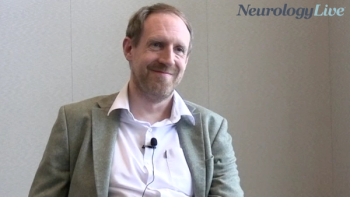In a recently published cross-sectional study, findings revealed that the moment of diagnosis for narcolepsy is the preferred time by both parents and adolescents to give all medical information about the condition.1 Results from the study suggest the need for providing information on narcolepsy that is comprehensible and tailored, as well as highlighted the role families have in supporting these individuals at that age.
The data showed that at least 33% of respondents reportedthat the first detection of narcolepsy by a clinician is the right moment for providing information on the condition (adolescents, 59.7%; mothers, 70.5%; fathers, 73.3%). Additionally, it was also considered the right time by more than a third of adolescents, mothers, and fathers (34.7%, 42.6%, and 37.5%, respectively), in which to disclose the causes of narcolepsy, and 33.9% of mothers considered this the best time to learn how many children live with narcolepsy.
Senior author Francesca Ingravallo, MD, PhD, associate professor of legal medicine, University of Bologna, and colleagues wrote, “Timely, focused, and good communication when narcolepsy is diagnosed may help children and family to accept the disease, cope with symptoms, accomplish pharmacological and non-pharmacological interventions, and access social support, thus mitigating the burden of the disease.”1
The study was conducted within one year, from December 2017 and December 2018, and included 62 adolescents between the ages of 12 and 20 with narcolepsy and 96 parents, all from the Narcolepsy Center of Bologna in Italy. The participants filled out a 28-piece questionnaire regarding information on narcolepsy with 14 questions on medical issues and another 14 questions on psychosocial issues. Both adolescents and parents ranked each item based on a 5-point Likert scale of importance for when the medical information on narcolepsy should be given and who should be the one to provide it.
Twenty-three adolescents (37.1%) were females (mean age, 16.4 [±2.5] years; median, 16 years; range 12-20) and 56 parents (58.3%) were females (mean age, 48.2 [±5.4] years; median 48 years; range 36-62). Notably, both groups reported similar ages at onset of narcolepsy symptoms (adolescents, mean 10.5 ± 3.5 years; adults, 10.1 [±3.6] years) and at diagnosis (adolescents, 12.8 [±3.2] years; adults, 12.2 [±3.6] years).
Adolescents rated 11 out of 14 medical (i.e., diagnosis, prognosis, treatment, and management) and psychosocial(i.e., impact on everyday life activities and on relationships with others, and possible support) pieces of information as important. Parents rated all items as important which confirmed prior research that parents want comprehensive information for better future preparation in providing quality care to their child.2,3
As for the right moment to provide information on future expectations by the clinician, follow-up visits were preferred by 34.3% of adolescents and 35.0% of fathers. The clinician was the preferred provider for information regarding psychosocial issues as it was indicated by 66.7% of mothers, and 70.0% of fathers, whereas 50.0% of adolescents indicated the parents.
Clinician-Based Survey Highlights Challenges in Diagnosing Narcolepsy in Children, Adolescents
When asked which efficacious diagnostic or treatment options they hope to see in the future, a majority of physicians, especially specialists, expressed a desire to see more useful biomarkers, followed by more effective diagnostic tests overall.
Ingravallo et al wrote, “The results shed light on the perspective of the protagonists, providing both information that is useful for the development of patient and family-centered communication strategies when narcolepsy is suspected or diagnosed in adolescents, and a basis for future studies.”1
Limitations of the study included that participants were recruited from a single center; hence the participants may have provided biased answers such as who the preferred provider would be from the questionnaire. Also, no information was collected in the context of the time of diagnosis as well as if adolescents and parents were satisfied with the information that was given to them about the diagnosis. Additionally, an existing suitable questionnaire was lacking and therefore, another one was developed for this study and was designed as descriptive because of possible answers and the high number of items.
“These results should discourage healthcare providers to adopt a “one-size-fits-all” approach,” Ingravallo and colleagues noted. “These results suggest that at the time of diagnosis parents and children should be provided with medical information, and with a list of information concerning psychosocial subjects to be discussed according to their preferences. In line with a patient and family-centered perspective, this approach, on one hand, acknowledges the autonomy of adolescents, and on the other hand may help them and the family to focus on what they need in the moment.”1
Guidelines in the future should consider the aspect of written material for providing information to patients and parents on the psychosocial consequences of narcolepsy and the treatment for a bio-psycho-social approach to narcolepsy. As for future research, multicentric and anonymous surveys should investigate the satisfaction of children and parents in terms of communication, the study investigators noted. More investigations should be conducted based on the differences between children and parents in their experience with receiving information on the diagnosis of narcolepsy.
REFERENCES
1. Leprotti S, Audetto E, Zenesini C, et al. What, when and by whom? Adolescents' and parents' preferences concerning narcolepsy information. Sleep Med. 2022;101:478-484. doi:10.1016/j.sleep.2022.11.030
2. Barlow JH, Shaw KL, Harrison K. Consulting the 'experts': children's and parents' perceptions of psycho-educational interventions in the context of juvenile chronic arthritis. Health Educ Res. 1999;14(5):597-610. doi:10.1093/her/14.5.597
3. Nevin SM, Wakefield CE, Schilstra CE, McGill BC, Bye A, Palmer EE. The information needs of parents of children with early-onset epilepsy: A systematic review. Epilepsy Behav. 2020;112:107382. doi:10.1016/j.yebeh.2020.107382
































